Marcel Bloch MB 151 - MB 152
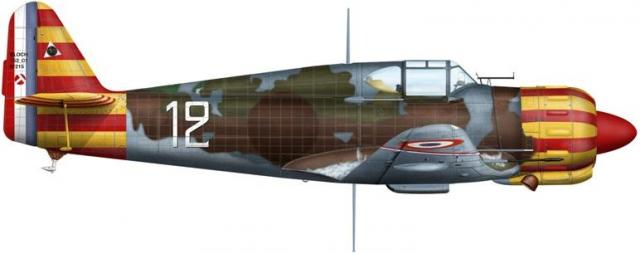
MB 152 n° 215 - © Srecko Bradic - www.sreckobradic.com
Développement - Development
Etudié en réponse à l'appel d'offre de l'Armée de l'air française de 1934 qui fut finalement remporté par le Morane-Saulnier MS.406, le premier prototype se révéla incapable de décoller en 1936. Rééquipé d'un moteur Gnome et Rhône 14N-0 de 940 ch. et après augmentation de la surface alaire, le prototype du MB 150 fit son premier vol en octobre 1937.
Developed for the tender of the French Air Force in 1934 which was finally won by the Morane-Saulnier MS.406, the first prototype was incapable to take off in 1936. Later fitted with an engine Gnome and Rhône 14N-0 of 940 hp. and after the increase of the wing area, the prototype of the MB 150 made its first flight in October, 1937.
Le Centre d'essais du matériel aérien (CEMA) conclut, au tout début de 1938, que les performances étaient suffisamment intéressantes pour justifier le développement de l'appareil et au printemps 25 exemplaires furent commandés à la SNCASO. La cellule se révéla impossible à construire en série et l'étude de deux nouveaux modèles, les MB.151 et MB.152, fut lancée. Les deux avions furent étudiés et produits en parallèle, et 120 étaient livrés à l'Armée de l'air à la déclaration de la Seconde Guerre mondiale. Cependant peu d'entre eux étaient capables de combattre car il leur manquait l'hélice et le collimateur.
The Experimental Centre of Air Equipment (CEMA) concluded, at the very beginning of 1938, that the performances were interesting enough to justify the development of the aircraft and in spring, 25 units were ordered to the SNCASO. The cell showed itself impossible to be build in series and the study of two new models, the MB.151 and MB.152, was launched. Both planes were studied and produced in parallel, and 120 were delivered to the Air Force at declaration of the Second World War. But only a few of them were capable of fighting by missing the propeller and the collimator.
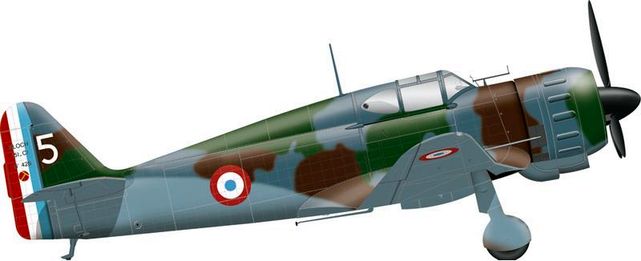
MB 151 C1 n°426
© Patrice Gaubert - L'armée de l'Air
Les MB.153 et MB.154 furent développés pour améliorer les performances par le montage de moteurs américains. Seul le MB 153 vola, et après qu'il eut été accidenté, tout développement cessa. Plus réussi, le MB.155, avait été dessiné pour améliorer l'autonomie, en installant un réservoir supplémentaire derrière le poste de pilotage qui fut déplacé vers l'avant. Les essais étant concluants, il fut commandé en 1940 et 10 exemplaires furent terminés avant l'armistice, 19 autres étant produits sous le régime de Vichy.
The MB.153 and MB.154 were developed to improve the performances by the assembly of American engines. Only the MB.153 flew, and after it had crashed, any development stopped. More successful, the MB.155 had been designed to improve the autonomy, by fitting a supplementary gas tank behind the cockpit which was moved forwards. The trials being decisive, it was ordered in 1940 and 10 units were ended before the armistice, 19 others being produced under the regime of Vichy.
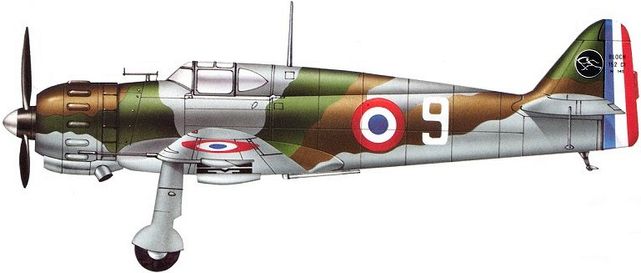
MB 152 C1 - GC II/1 - 3° escadrille - GC (FG) II/1 - 3rd squadron
(artiste inconnu - artist unknown - source : http://wp.scn.ru)
Le MB.157 fut redessiné pour accueillir un Gnome & Rhône 14R "Météore" de 1700 CV. Le prototype fut achevé sous supervision allemande suite à sa capture lors de la débâcle (Bloch avait tenté de convoyer l'avion démonté vers le sud de la France), puis testé par ceux-ci en 1942 à Orly: les Allemands furent très étonnés de ses performances exceptionnelles (710 km/h à 7800 m et 670 km/h en puissance nominale à 8500 m, soit un peu plus rapide par exemple qu'un Mustang P51D), au point que son moteur fut démonté et envoyé en Allemagne chez BMW ...La cellule fut finalement détruite à Orly par un raid aérien allié.
The MB.157 was redesigned to welcome a Gnome and the Rhône 14R "Meteor" engine of 1700 HP. The prototype was finished under German supervision further to its capture during the collapse (Bloch had tried to ship the unassembled aircraft to the south of France), then tested by them in 1942 in Orly : the Germans were very amazed at its exceptional performances (710 km/h at 7800 m and 670 km/h in nominal power at 8500 m, ie a bit fasyter for example than a Mustang P-51D), and its engine was dismantled and sent in Germany at BMW... The cell was finally destroyed in Orly during an allied air raid.
Les Versions - Variants
- MB.150.01
Prototype.
- MB.151.01 & MB.151.C1
140 MB.151 furent livrés à l'Armée de l'Air Française et 16 à l'Aéronautique Navale au 10 mai 1940. 9 avions furent également livrés à l'Armée de l'Air Grecque.
On May 1940, the 10th, 140 MB.151 were delivered to the French Air Force and 16 to the Naval Air Force. 9 aircrafts were also delivered to the Greek Air Force. -
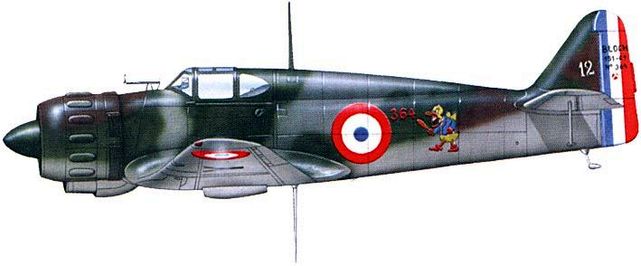
MB 151. C1 n°364
Centre d'entraînement de Chartres, 1940 - Chartres Training Center (France), 1940.
(artiste inconnu - artist unknown - source : http://wp.scn.ru)
MB.152.01 & MB.152.C1
Fabriqué à partir de la cellule n° 433 d'un MB.151 en octobre 1938. 482 exemplaires seront fabriqués.
Build from the cell n°433 of a MB.151 in October 1938. 482 units built.
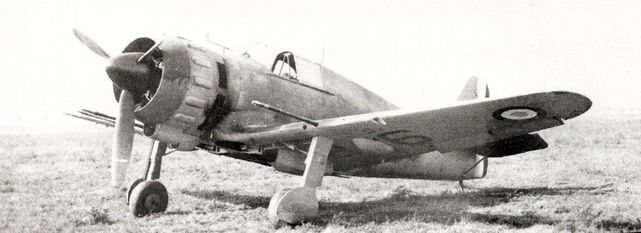
- MB 152 n°99 (Y586) - Un des 6 prototypes de pré-série. One of the 6 pre-serie prototypes.
-

MB 152 C1 n°224 - 3° escadrille - GC II/1 - 3rd Squadron - GC (FG) II/1 © Vincent Dhorne
- MB.153.01
Un seul prototype fabriqué avec un moteur Pratt & Whitney R-1830 Twin Wasp.
Only one prototype built with a Pratt & Whitney R-1830 Twin Wasp engine.
MB.154
Etudié avec un moteur Wright R-1820 Cyclone, jamais fabriqué.
Designed with Only a Wright R-1820 Cyclone engine, never built.
MB.155.01 & MB.155.C1
Un prototype construit à partir d'un MB.152 puis 29 appareils construits.
Only one prototype built from a MB.152 and then 29 aircrafts built.
MB.157
Un prototype construit à partir d'un MB.152 avec moteur Gnome & Rhône 14R "Météore" de 1700 CV.
One prototype built from a MB.152 with a Gnome & Rhône 14R "Météore" engine of 1700 HP.
Fiche technique - Technical data (MB 152 C1)

Les unités opérationnelles - Operational units
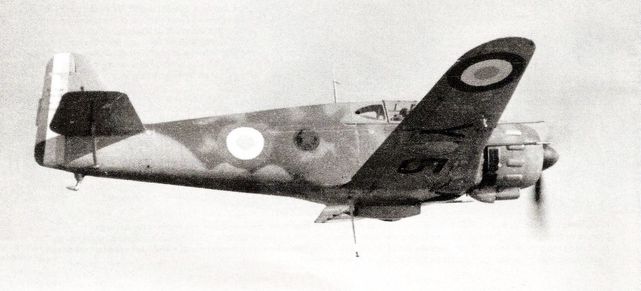
MB 152 n°111 (Y598)
Capitaine Coutaud (6 victoires sûres et 2 probables) - GC I/1
Captain Coutaud (6 victories and 2 probables) - GC (FG) I/1
Au début de la guerre en septembre 1939, un total de 120 M.B. 151 et M.B. 152 étaient livrés, mais pour beaucoup sans collimateur ou hélice. Même fin novembre, après que 358 furent livrés, 157 étaient encore sans hélice et connaissaient de sérieux problèmes de surchauffe.
Les unités qui passèrent sur MB 151 et MB 152 fin 1939 furent les GC I/1, I/8, I/9, II/1, II/10, III/9 et III/10 ainsi que l'escadrille aéronavale AC-3. En 1940, les GC II/6, II/8 et II/9 furent également équipés de ces chasseurs.
By the beginning of the war in September 1939 a combined total of 120 M.B.151 and M.B.152s had been delivered, but for a lot of them without gunsights or propellers. Even by the end of November, at which time 358 had been delivered, 157 were still without propellers and there were serious problems with engine overheating.
Units to convert to MB 151 and MB 152 by the end of 1939 were GC I/1, I/8, I/9, II/1, II/10, III/9 and III/10, and the French Navy's Escadrille AC-3. In 1940, GC II/6, II/8 and II/9 had also been equipped with these fighters.
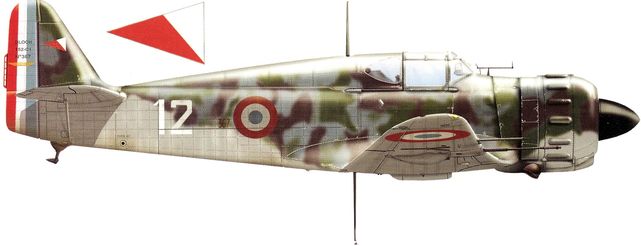
MB 152 n°367
Détruit par le S/Lt Dupuy le 18 octobre 1940 près de Salon-de-Provence après avoir pris feu en vol - 5° escadrille - GC III/9
Destroyed by S/Lt Dupuy on October 18th, 1940 close to Salon-de-Provence (France) after having catched fire during the flight - 5th squadron - GC(FG) III/9.
© Jean-Louis Couston


MB 152 C1
4° escadrille - GC I/1 - 4th squadron - GC (FG) I/1
© Vincent Dhorne

MB 152 C1 n°34 (?)
2° escadrille - GC I/8 - 2nd squadron - GC (FG) I/8
© Vincent Dhorne
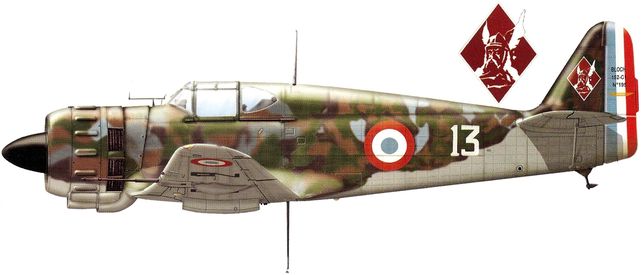
MB 152 n°195
Accidenté par l'Adj Goblet le 23 décembre 1940 sur panne au décollage de Marignane - 5° escadrille - GC III/9
Damaged by Adj Goblet on December 23rd, 1940 on breakdown when taking off from Marignagne (France) - 5th squadron - GC (FG) III/9
© Jean-Louis Couston
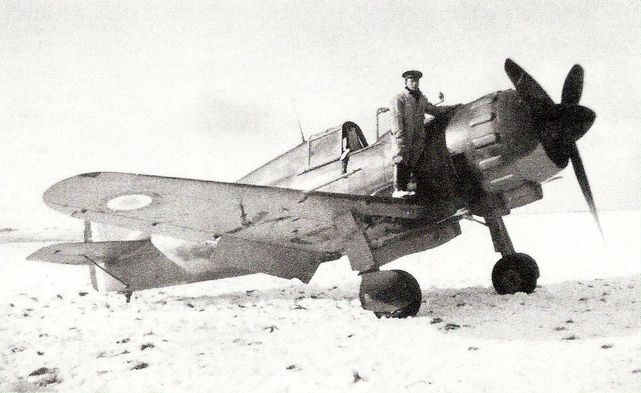
MB 151 n° 75 (Y562) - 2° escadrille - 2nd squadron - GARC II/561 - Le Havre-Octeville
Créé en octobre 1939, le GARC (Groupe Aérien Régional de Chasse) II/561 deviendra le GC III/10 le 11 janvier 1940.
Founded in October 1939, the GARC (Aerial Regional Fighter Group) II/561 becama GC III/10 on January 11th, 1940.
Après la conclusion de l'Armistice, la production de la SNCASO s'arrêta : un total de plus de 600 exemplaires avait été fabriqué. Quand trois des groupes furent rééquipés de chasseurs Dewoitine, les MB 151 et MB 152 furent envoyés à l'Armée de l'Air Roumaine.
After the conclusion of the Armistice, the SNCASO production ended :a total of more than 600 had been built. When three of the groups were re-equipped with Dewoitine fighters, the MB151s and M.B.152s were handed over to the Romanian air force.

MB 152 C1 n°670 - GC II/9 - GC (FG) II/9
© Vincent Dhorne
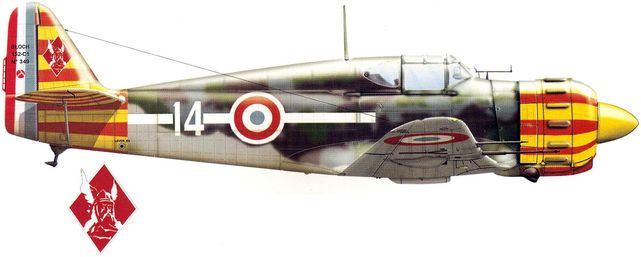
MB 152 n°349 - S/Lt du Boucher - Hyères-Le Palyvestre (France)
5° escadrille - GC III/9 - 1er semestre 1942 - 5th squadron - GC (FG) III/9 - 1st semester, 1942.
© Jean-Louis Couston

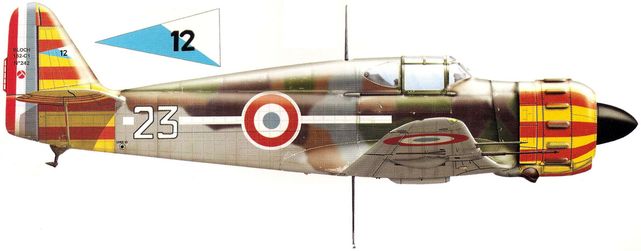
MB 152 n°242 - S/Lt Martin - Hyères-Le Palyvestre (France)
6° escadrille - GC III/9 - 1er semestre 1942 - 6th squadron - GC (FG) III/9 - 1st semester, 1942.
© Jean-Louis Couston
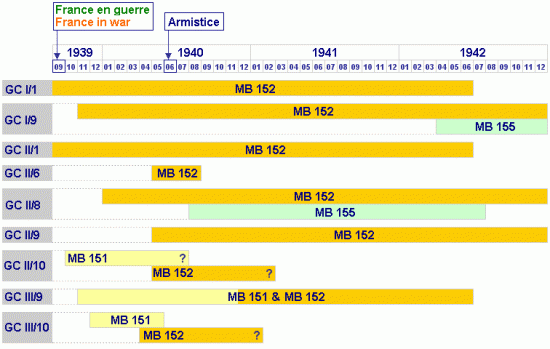
Une unité spéciale : le GC I/145 - A special Unit : the GC I/145
En janvier 1940, français et polonais décident d'envoyé un groupe de chasse équipé de Caudron CR.714 en Finlande. L'opération est annulée mais le GC I/145 est créé. Le gouvernement Français demande à l'Etat-Major la mise à disposition de 20 Bloch MB 152 ou 151 mais celui-ci refuse. Le GC I/145 sera donc équipé de Caudron CR.714 et envoyé au front à Dreux le 2 juin 1940. Le 11 juin, le groupe reçoit enfin les trois premiers MB 152 pour instruction des pilotes (les numéros 149 (codé "28"), 156 (codé "12") et 202 (codé "4") du GC I/8). Le 12 juin, le numéro 149 est posé sur le ventre et sera abandonné. Le 13 juin, le groupe quitte Sermaises pour Châteauroux avec ses Caudron et ses deux Bloch. Le 16 juin, le groupe rejoint Rochefort. Puis le 19, les pilotes partent à La Rochelle pour être embarqués et abandonnent leurs avions. Les deux Bloch, qui n'auront servi qu'à l'entraînement, seront récupérés par l'escadrille AC 5 de l'aéronautique navale.
In January 1940, French and Polish decide of send a fighter group equipped with Caudron CR.714 in Finland. The operation is cancelled but the GC I/145 is created. The French government requires from the General Headquarter the delivery of 20 Bloch MB 152 or 151 but this one refuses. The GC I/145 will thus be equipped with Caudron CR.714 and sent on the front at Dreux on June 2nd, 1940. On June 11th, the group finally gets the first three MB 152 for training of the pilots (numbers 149 (code "28"), 156 (code "12") and 202 (code "4") of the GC I/8). On June 12th, the number 149 is landed on the belly and will be abandoned. On June 13th, the group leaves Sermaises for Châteauroux with its Caudron and its two Bloch. On June 16th, the group joins Rochefort. Then on the 19th, the pilots leave to La Rochelle to be embarked and leave their aircrafts. The two Bloch, used only for training, will be taken by the squadron AC 5 of naval air force.
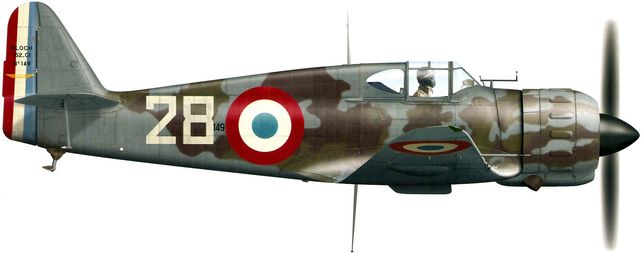
MB 152 n°149 - Césarville (France)
GC I/145 - 12 juin 1940 - GC (FG) I/145 - 12th June, 1940.
© Yann Le Gal
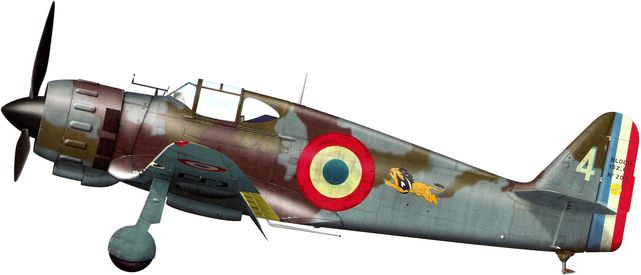
MB 152 n°202 - Rochefort (France)
GC I/145 - 18 juin 1940 - GC (FG) I/145 - 18th June, 1940.
© Yann Le Gal
Des MB 151 pour l'entraînement des mécaniciens.
MB 151 for the training of the mechanics.
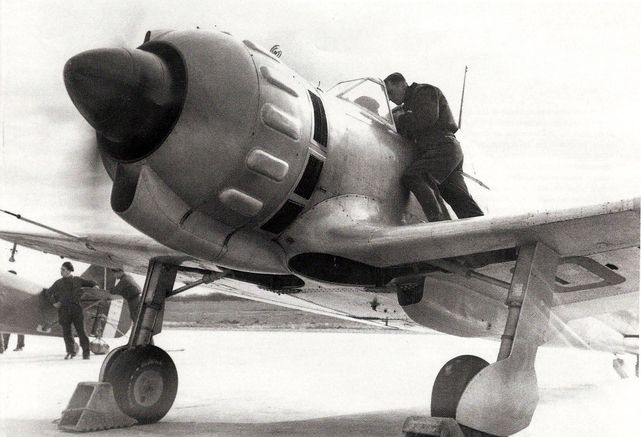
MB 151 n° 13 (Y500) - Rochefort (France)
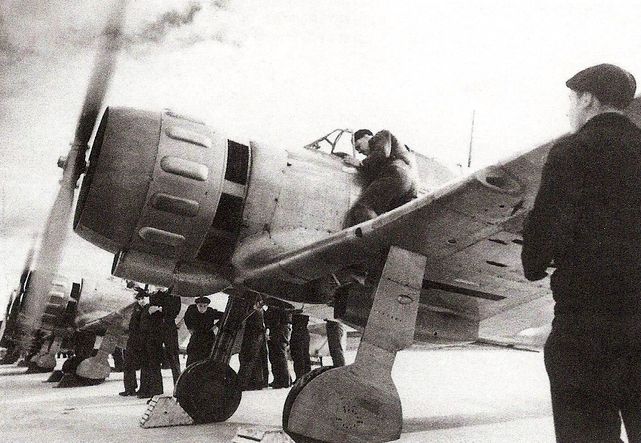
MB 151 n° 23 (Y510) - Rochefort (France)
Les autres utilisateurs - Other operators
Grèce - Greece
Neuf MB 151 furent livrés juste avant l'armistice en 1940 à l'armée de l'air Grecque.
Nine MB151s had been supplied to the Greek air force just before the Armistice in 1940.
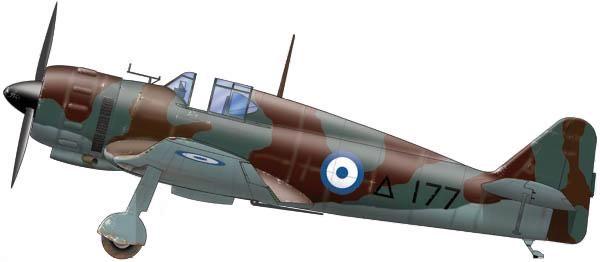
MB 151 © Mihail Solanakis

MB 151 © Mihail Solanakis
Royaume-Uni - United Kingdom
Il semble également qu'au moins un MB 152 C1 fut envoyé et immatriculé en Angleterre.
It seems that at least one MB 152 C1 has been sent and registered in England.

MB 152. C1 n°656
Pilote polonais Zdislaw Henneberg, Netheravon (Royaume-Uni) - août 1940.
Polish pilot Zdislaw Henneberg, Netheravon (UK) - August, 1940.
© Mihail Solanakis
Allemagne - Germany
Certains MB 151 et MB 152 capturés en 1940 furent transformés aux couleurs allemandes pour l'entraînement. Le MB 151 n°55 (Y-542) fut accidenté le 22 septembre 1940 par l'Oberfeldwebel Otto Schulz (futur Ritter Kreuz) ; il servait probablement alors à l'Ergänzungsstaffel de la JG 51 à Cazaux. En 1942, des MB 152 du GC II/8 aux couleurs de Vichy furent également transférés à la Luftwaffe comme avions d'entraînement.
Some MB 151 and MB 152 captured in 1940 were transformed under German colors for training. The MB 151 n°55 (Y-542) was damaged on September 22nd, 1940 by Oberfeldwebel Otto Schulz (future Ritter Kreuz) ; it was probably used at that time at the Ergänzungsstaffel of the JG 51 at Cazaux (France). In 1942, some MB 152 of GC II/8 under Vichy colors were also transferred to the Luftwaffe as training aircrafts.
Roumanie - Roumania
Après l'Armistice de 1940, des MB 151 et MB 152 furent envoyés à l'Armée de l'Air Roumaine quand trois groupes de chasse furent rééquipés en chasseurs Dewoitine.
After the Armistice in 1940, some MB 151 and MB 152 were sent to the Roumanian Air Force when three Fighter Groups were transformed to Dewoitine fighters.
Pilotes de MB 152 - MB 152 pilots
